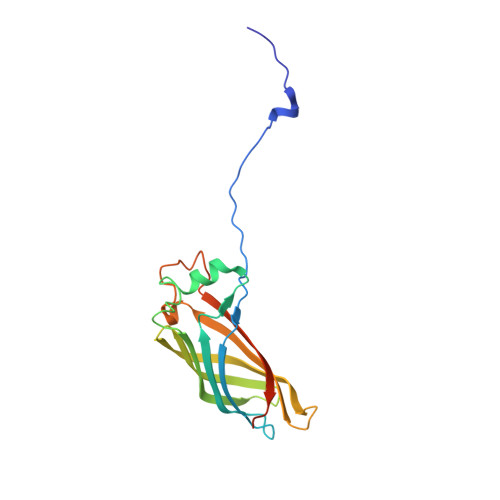Installing Guest Molecules at Specific Sites within Scaffold Protein Crystals.
Huber, T.R., McPherson, E.C., Keating, C.E., Snow, C.D.(2018) Bioconjug Chem 29: 17-22
- PubMed: 29232505
- DOI: https://doi.org/10.1021/acs.bioconjchem.7b00668
- Primary Citation of Related Structures:
5W17, 5W2D, 5W2K, 5W2R, 5W2V, 5W2X, 5W2Z, 5W30, 5W31, 5W32, 5W37, 5W39, 5W3A, 5W3B, 5W3C - PubMed Abstract:
Protein crystals are porous self-assembling materials that can be rapidly evolved by mutagenesis. We aimed to develop scaffold assisted crystallography techniques in an engineered protein crystal with large pores (>13 nm). Guest molecules were installed via a single covalent bond to attempt to reduce the conformational freedom and achieve high-occupancy structures. We used four different conjugation strategies to attach guest molecules to three different cysteine sites within pre-existing protein crystals. In all but one case, the presence of the adduct was obvious in the electron density. Structure determination of larger guest molecules may be feasible due to the large pores of the engineered scaffold crystals.
Organizational Affiliation:
Department of Chemical and Biological Engineering, Colorado State University , 1301 Campus Delivery Fort Collins, Colorado 80523, United States.
















